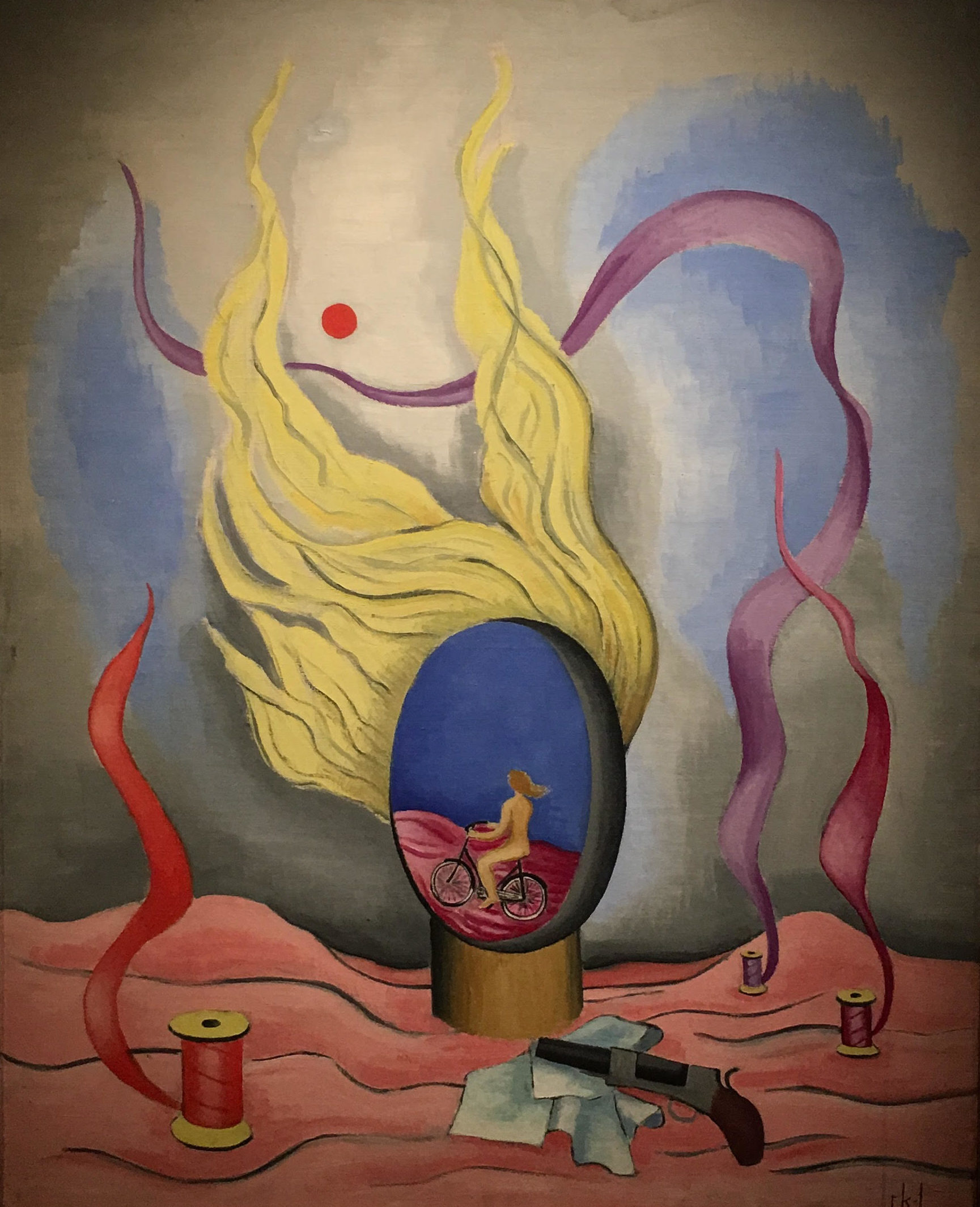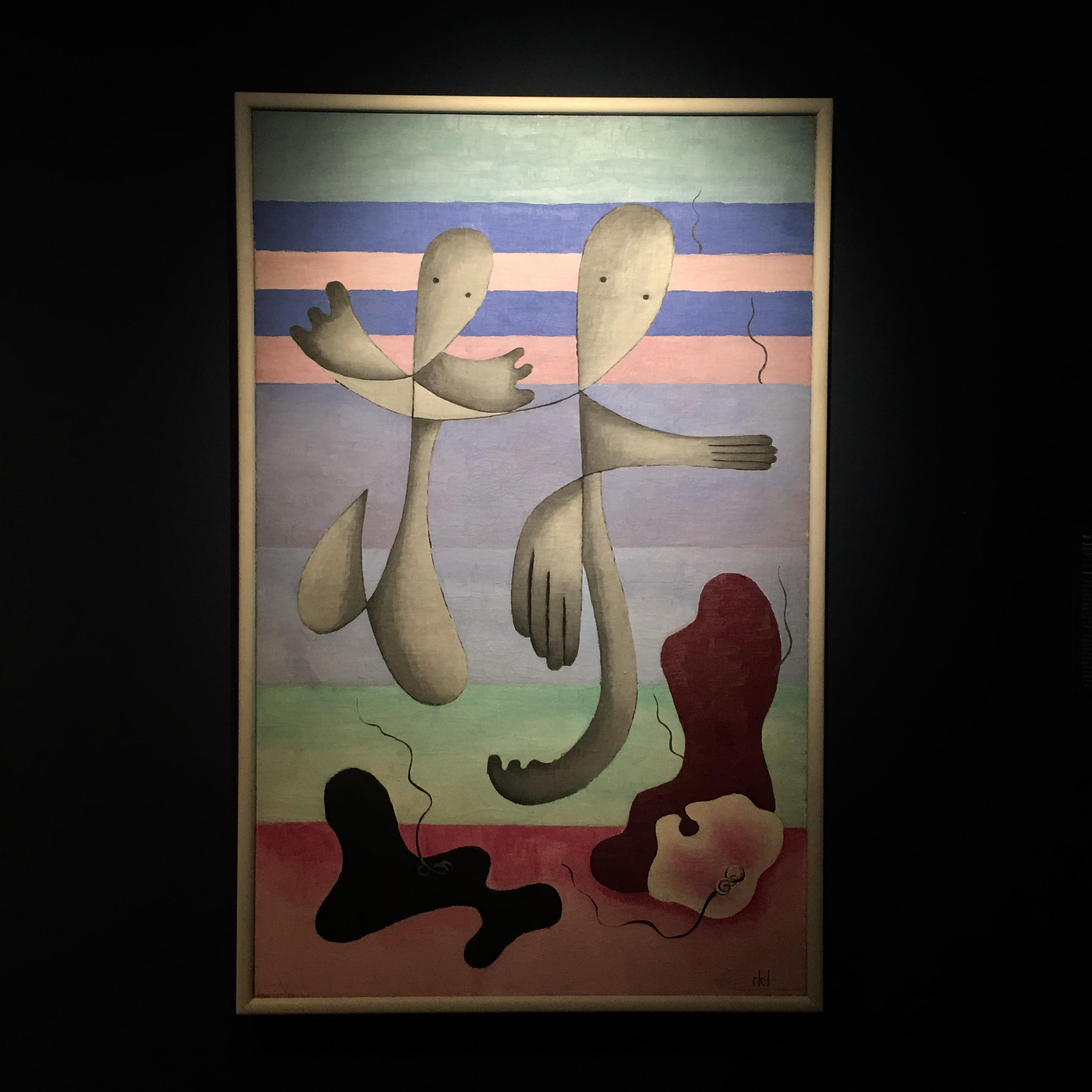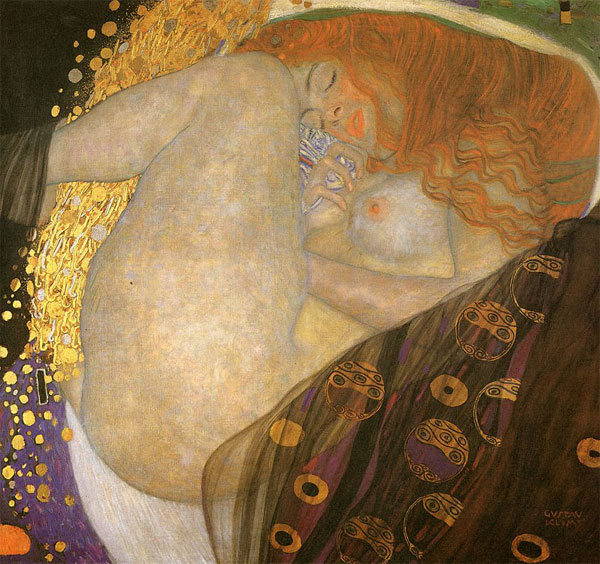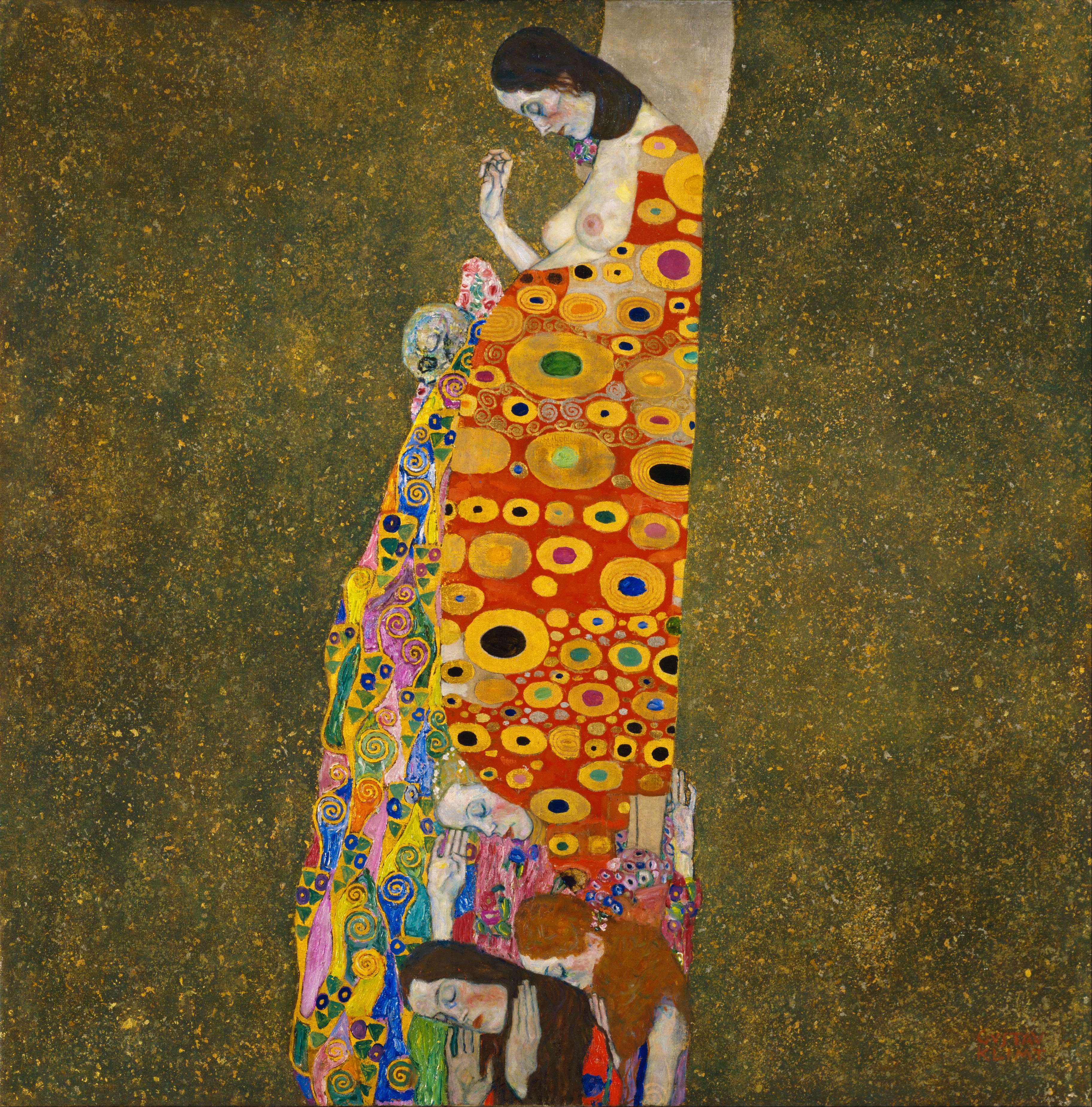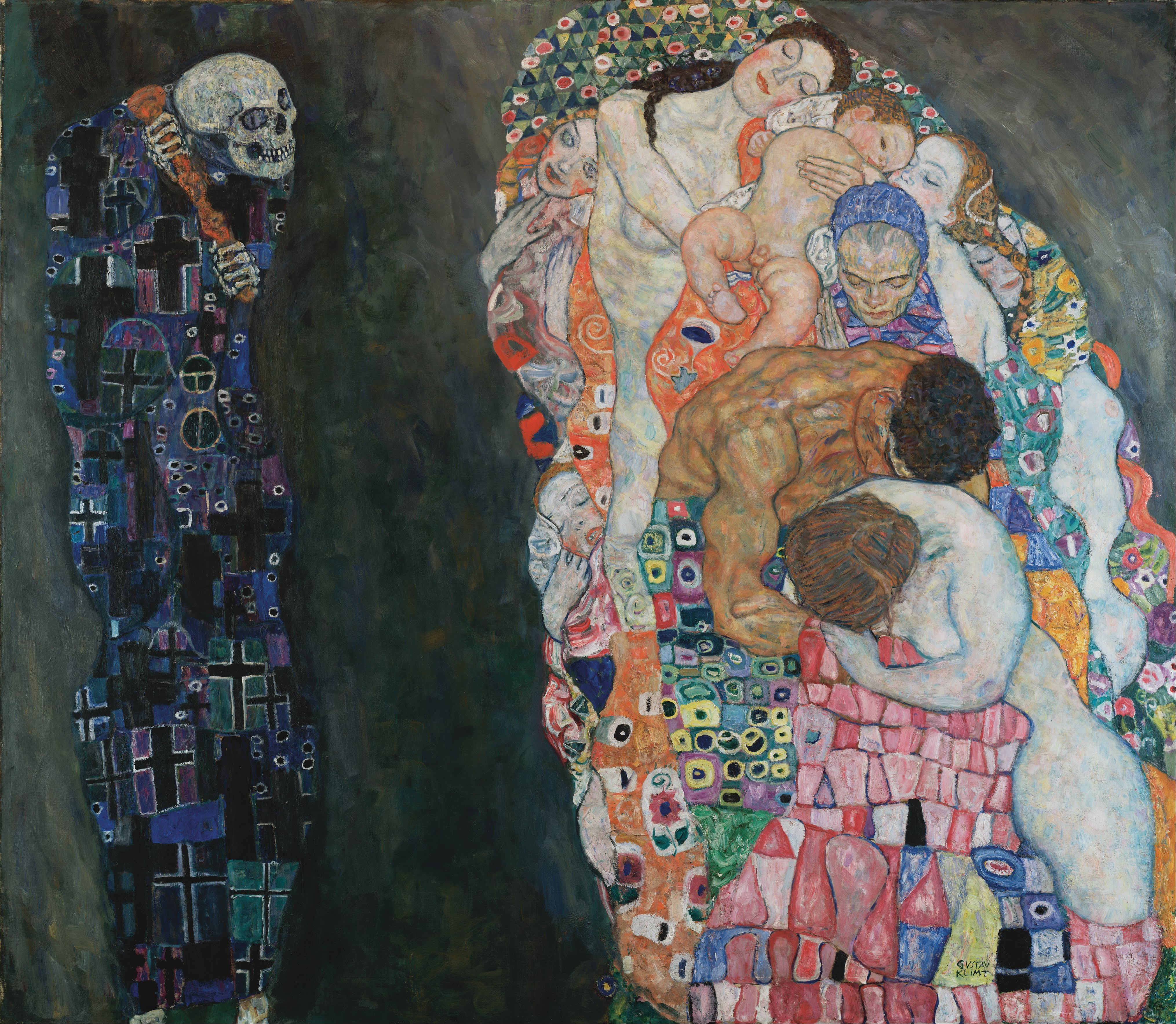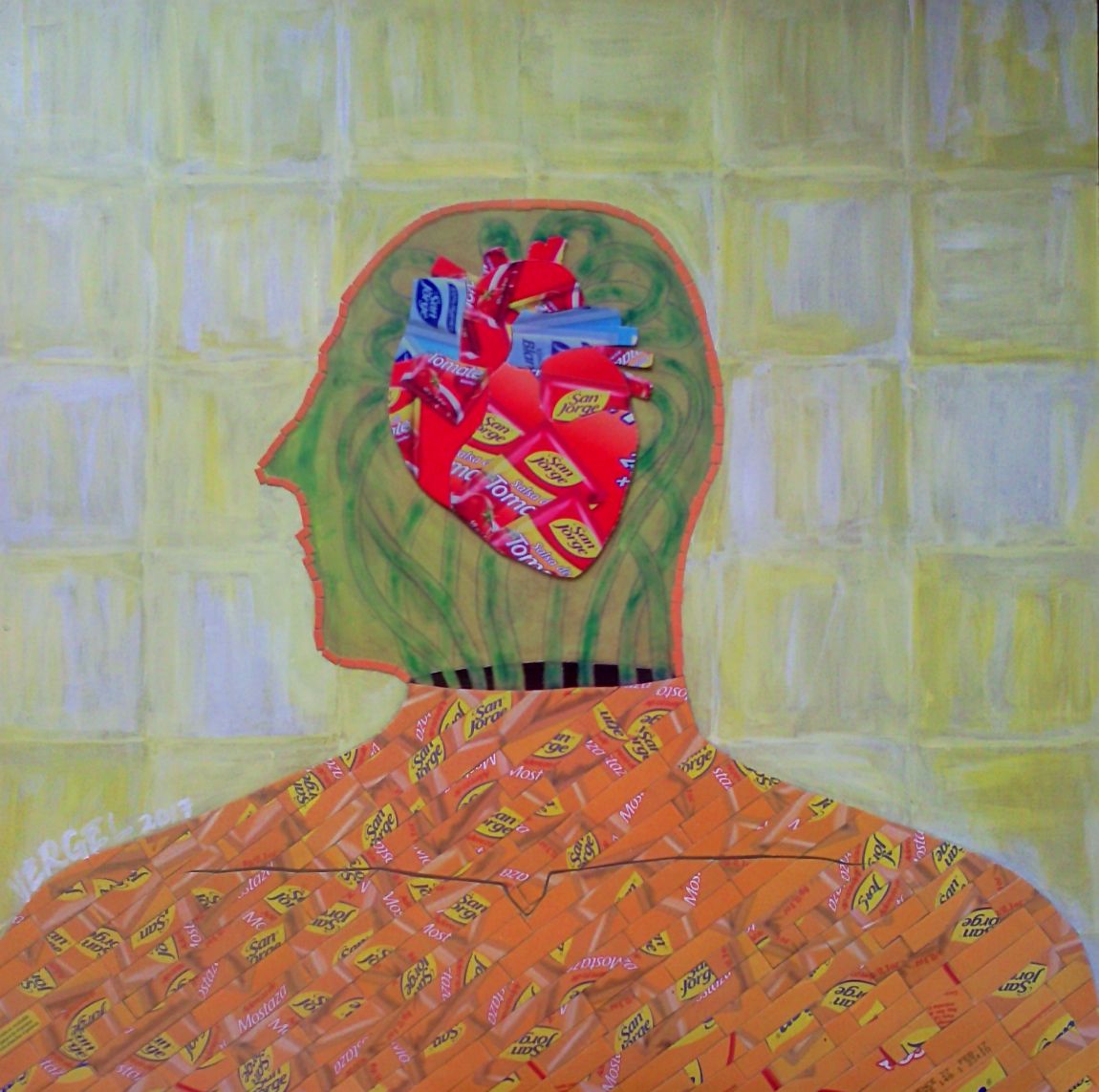
Name: Leo Vergel
DOB: December 1988
Place of birth: Cartagena de Indias, Colombia
Occupation: Artist
I was born on December 16, 1988 in the Caribbean city of Cartagena de Indias, Colombia, I was given the name Jesús Leonardo Vergel Alvarez, but I prefer Leonardo Vergel, because of the pressures of this society that is always dictating what to do, ending up giving up and studying a university degree “Profitable”, which by the way does not end because I decided to make art and live from it. I have never entered an artistic institution, I firmly believe in confronting the work a thousand times and do it very often, I am totally self-taught, painting now means for me to have recast the child I had forgotten.
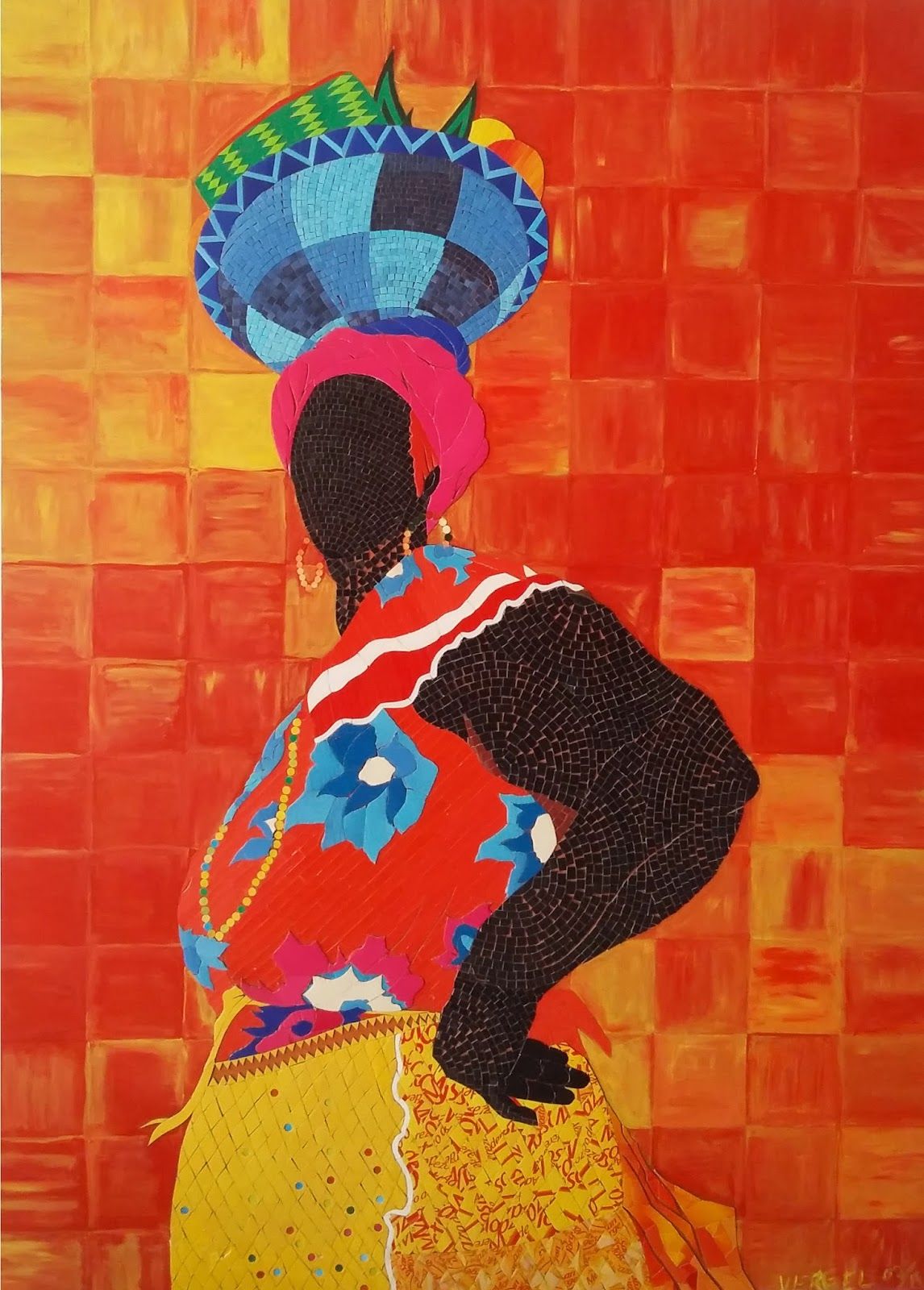
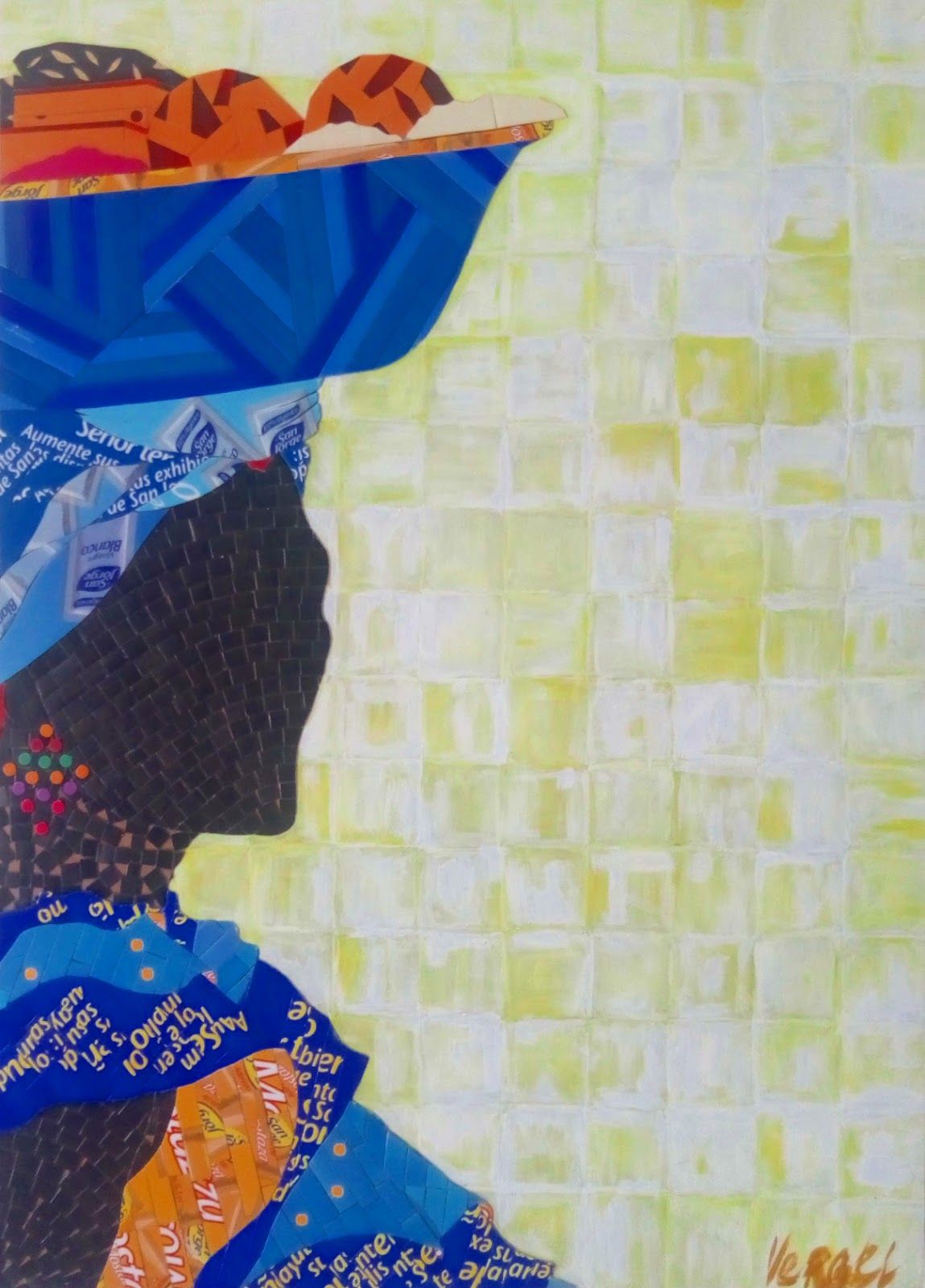
“Palenquera No.2” – Mixed, acrylic and recycled cardboard on wood- 24.02in x 17.32in x 1.57in, 2016
My technique is to use colored cardboard cutouts, I can use them in a way that has an order or a random shape purposely that allows me to express the idea at that time. The shapes I use are rectangular, square, rhomboid or other triangular cases, I think it is because when I had a little fun playing using these materials and associated them with those geometric figures I saw in school.
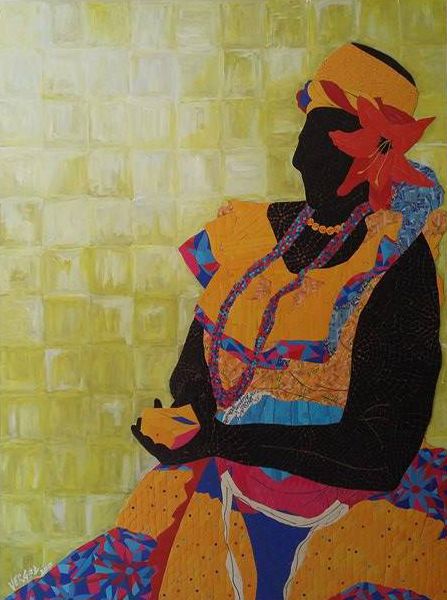
This can also be seen in the funds that I make in my works, to this is added that when I was 7 or 8 years I saw a lot of Japanese TV program called “nopo y gonta” where the presenter very creatively taught Children on topics such as geometry and how this could be creatively used to create any number of fun objects. Part of what I saw and lived as a child is reflected today in my work.
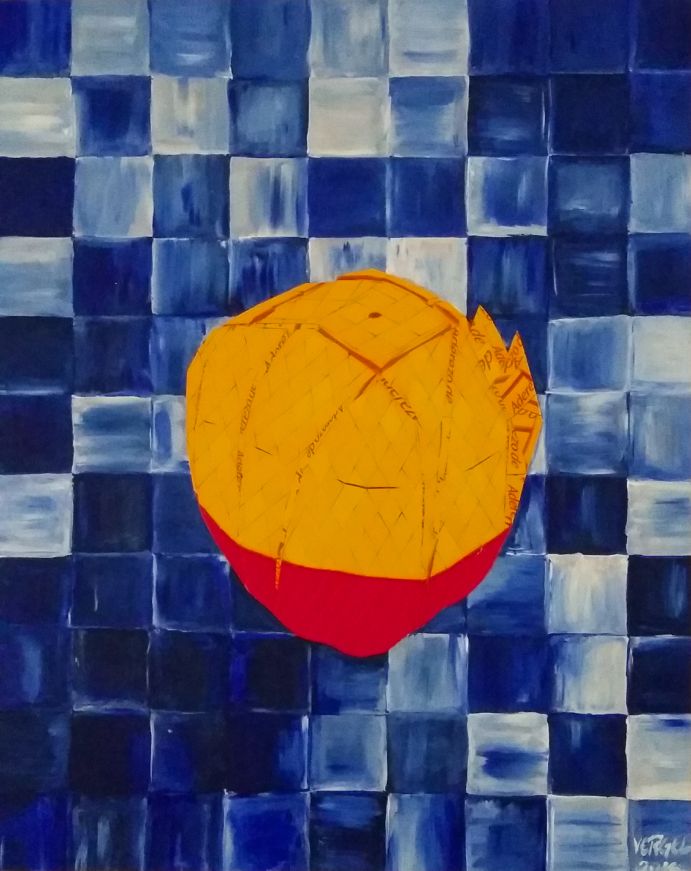
My work is handled in a genre that I still try to understand and that for me is handled between painting and collage, but I could not say that it is clearly one or the other. My work begins to manage a little symbolism, from the memories, what I live in my daily life and what I think or how I see the world.
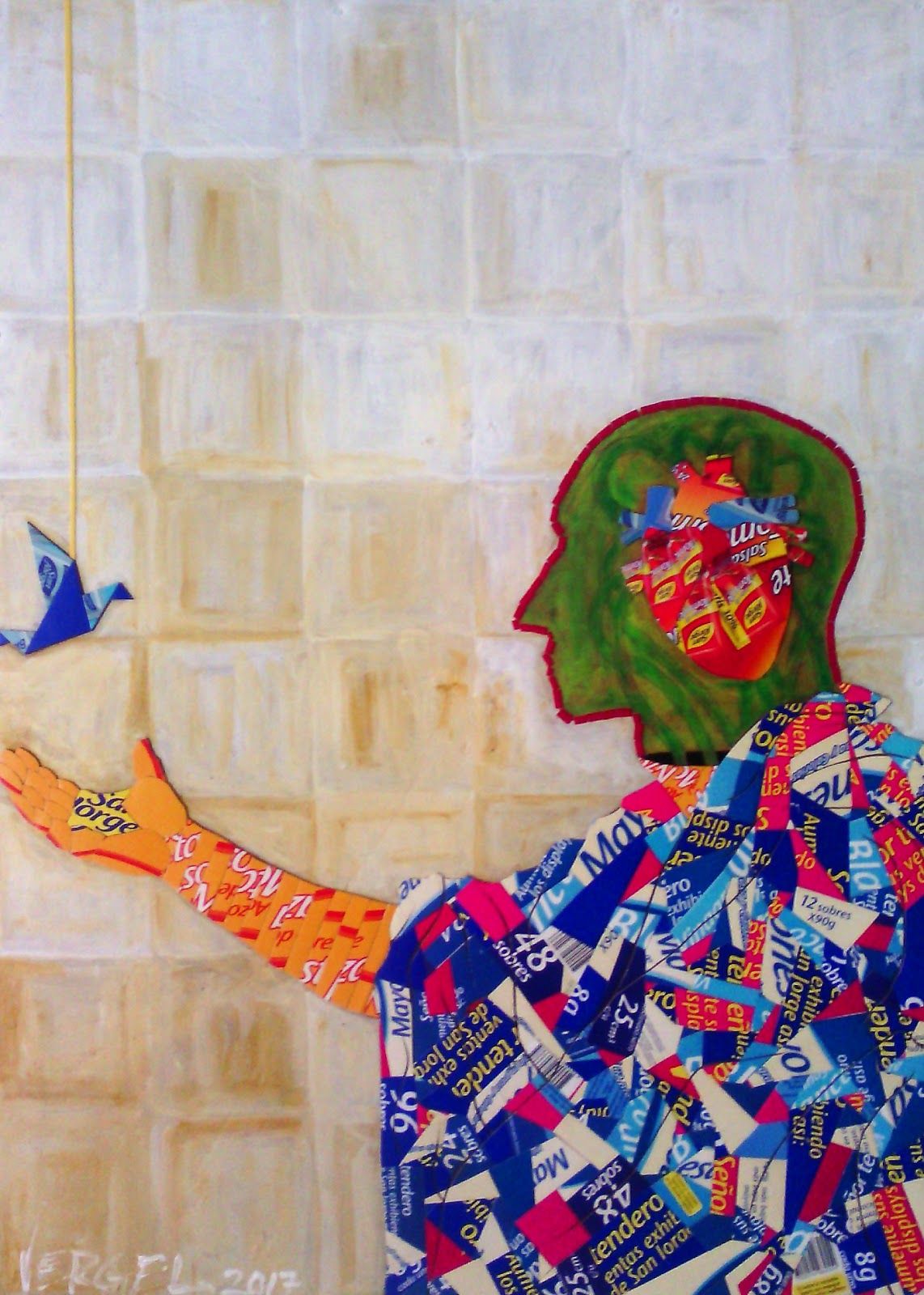
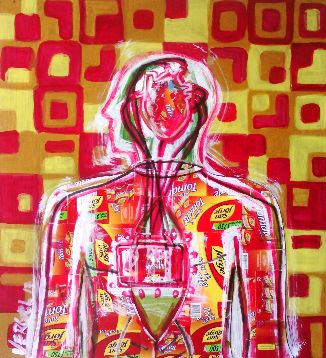
I like to think that it is Fauvism, by the way I express myself emotionally through color, but with recycled cardboard of vivid colors reinforced with acrylic. I have seen and I am inspired by works of great masters like Gustav Klimt, the way as in his work and uses the color are great teaching for me and I try to achieve it with my work, that the color and the human figure achieve a moving impact In people to the point of reflection. I would like very much to get my work to transcend my generation and in fact to impact people, to let people know that there are always second chances, I want to leave a legacy. My technique is inherent in me, it represents my childhood, when you do not have the resources to paint the only thing that matters is you and your imagination, the rest you forget, it loses importance.
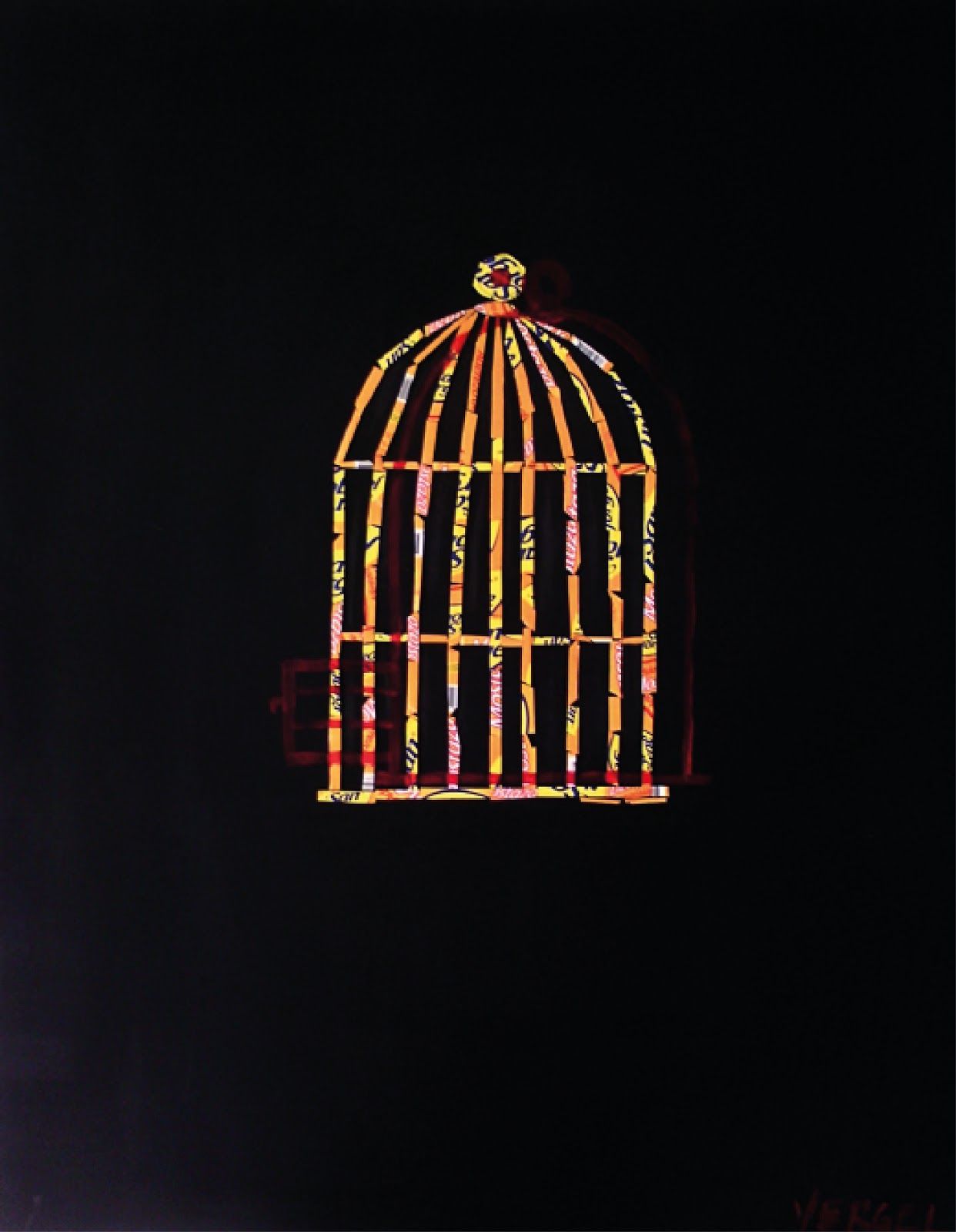
Exhibitions
2015- Artists Happy Hour. Roxana Avila. Badillo Hotel Gallery. Cartagena Colombia.
2016- Project 30. Art Director: Leonardo González. XIX Festival Zaquesazipa-Funza.
2016- Funza, Cundinamarca, Colombia.
© Leonardo Vergel
